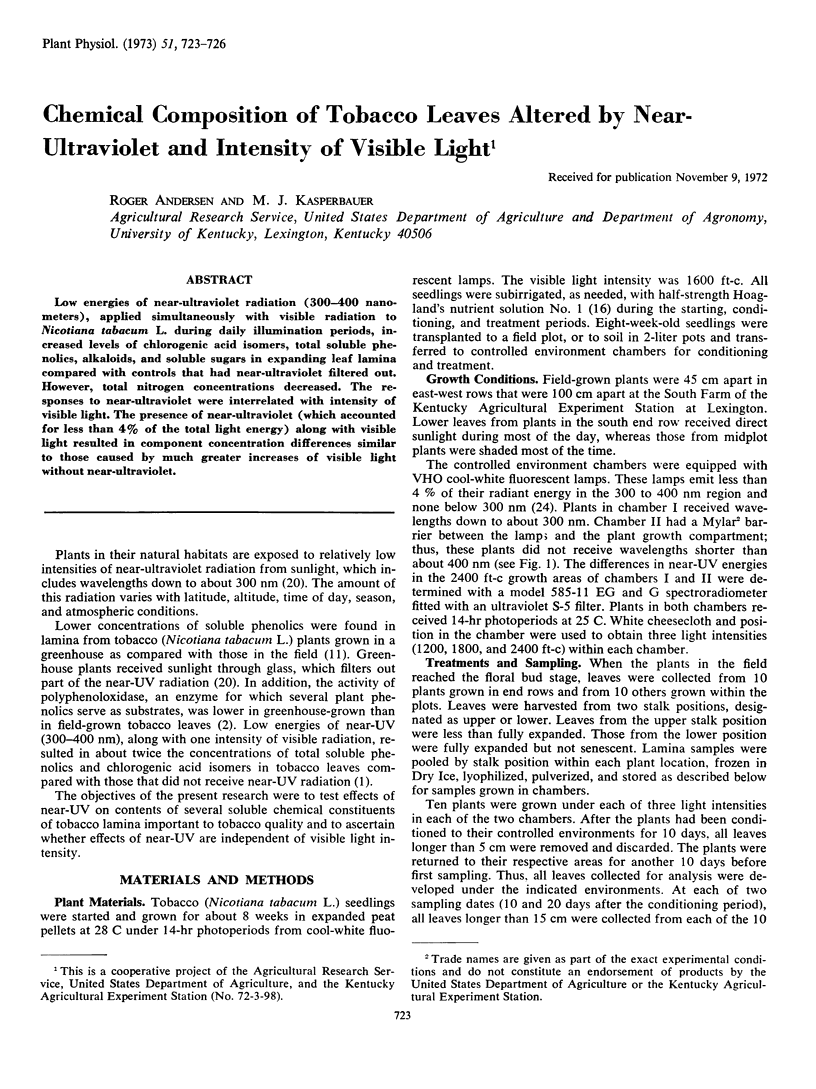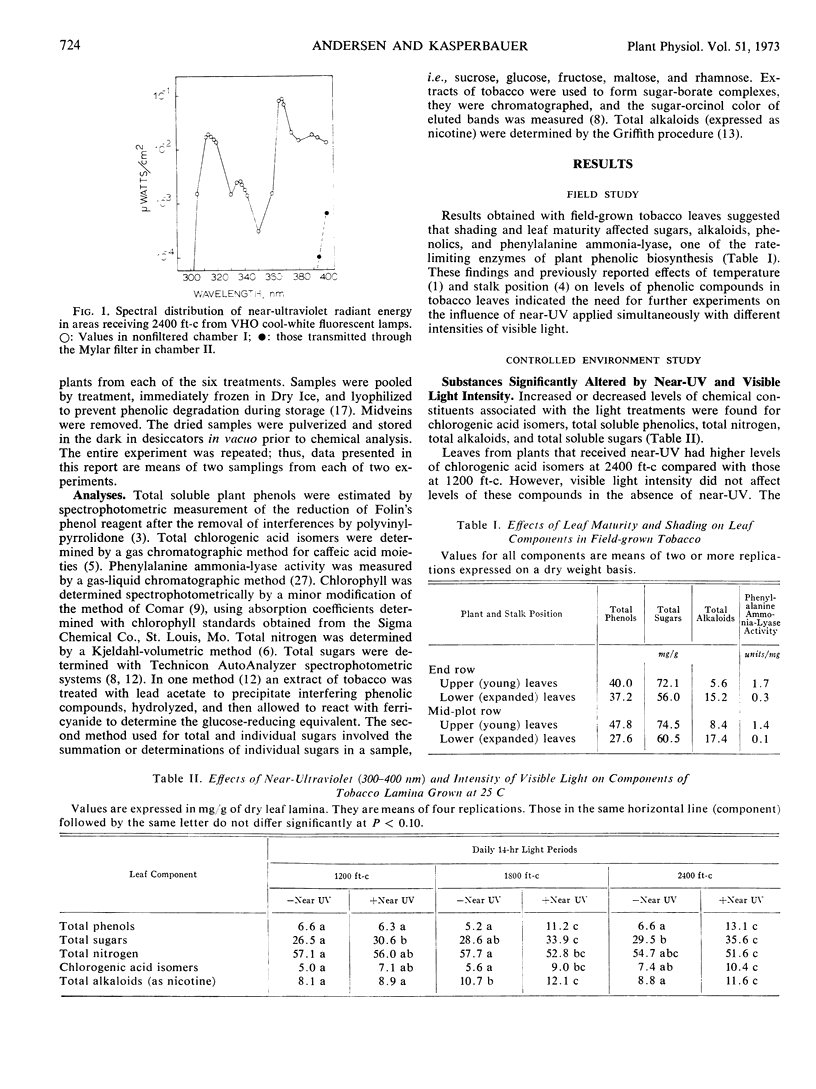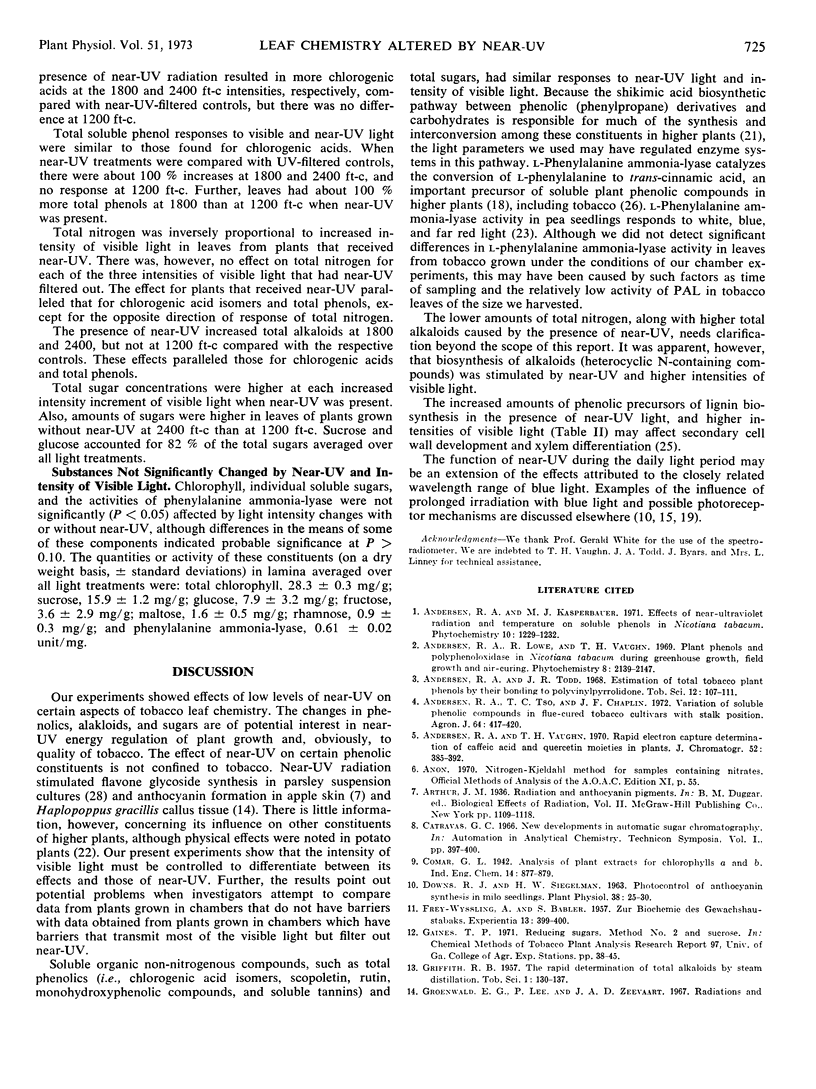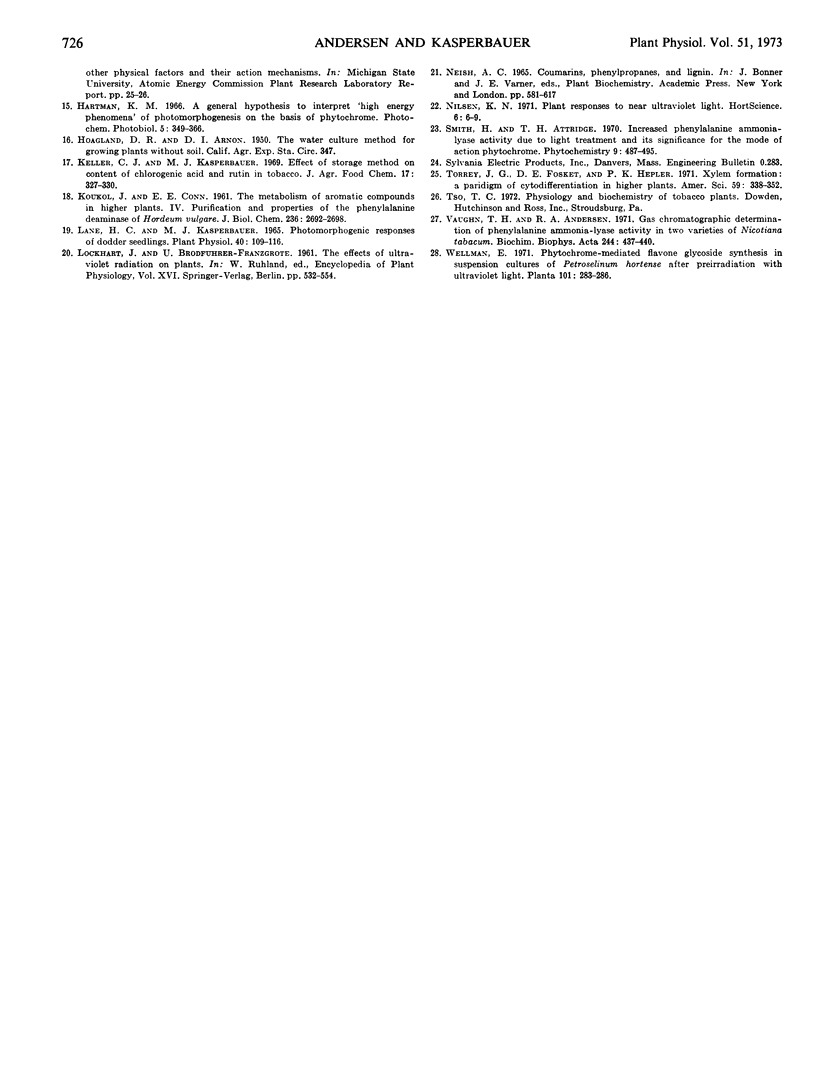Abstract
Low energies of near-ultraviolet radiation (300-400 nanometers), applied simultaneously with visible radiation to Nicotiana tabacum L. during daily illumination periods, increased levels of chlorogenic acid isomers, total soluble phenolics, alkaloids, and soluble sugars in expanding leaf lamina compared with controls that had near-ultraviolet filtered out. However, total nitrogen concentrations decreased. The responses to near-ultraviolet were interrelated with intensity of visible light. The presence of near-ultraviolet (which accounted for less than 4% of the total light energy) along with visible light resulted in component concentration differences similar to those caused by much greater increases of visible light without near-ultraviolet.
Full text
PDF



Selected References
These references are in PubMed. This may not be the complete list of references from this article.
- KOUKOL J., CONN E. E. The metabolism of aromatic compounds in higher plants. IV. Purification and properties of the phenylalanine deaminase of Hordeum vulgare. J Biol Chem. 1961 Oct;236:2692–2698. [PubMed] [Google Scholar]
- Lane H. C., Kasperbauer M. J. Photomorphogenic Responses of Dodder Seedlings. Plant Physiol. 1965 Jan;40(1):109–116. doi: 10.1104/pp.40.1.109. [DOI] [PMC free article] [PubMed] [Google Scholar]
- Vaughn T. H., Andersen R. A. Gas chromatographic determination of phenylalanine ammonia-lyase activity in two varieties of Nicotiana tabacum. Biochim Biophys Acta. 1971 Aug 19;244(2):437–440. doi: 10.1016/0304-4165(71)90247-9. [DOI] [PubMed] [Google Scholar]


